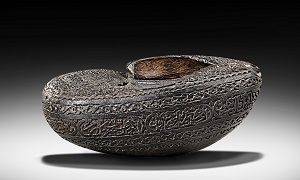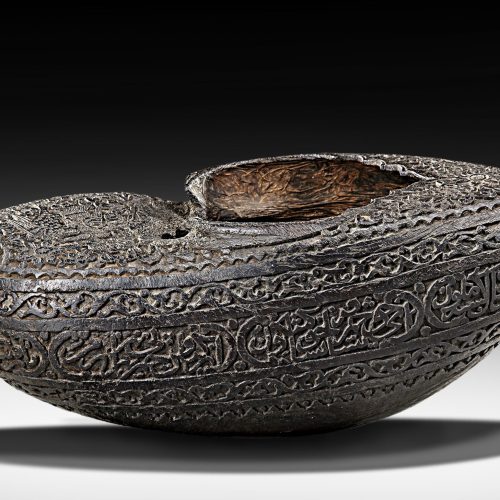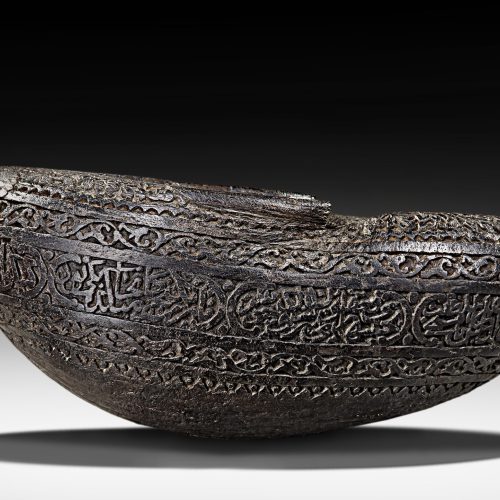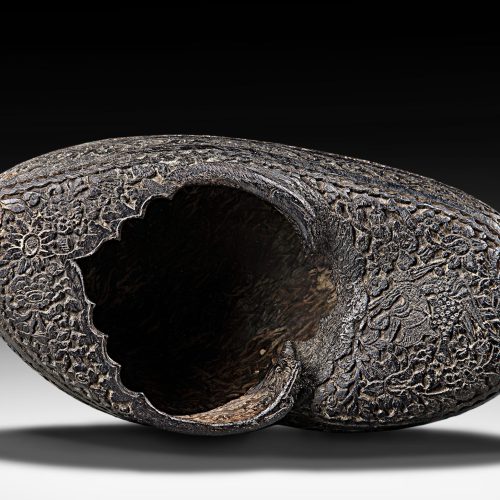Footnote: | The Persian word kashkul represents the oval or boat-shaped beggar’s bowl made of coconut, metal or wood that dervishes have carried over their shoulders for generations and used to collect donations. Our example is carved from half a nutshell of the fruit of the coco de mer palm which grows in the Seychelles Islands, in the Indian Ocean, and washes ashore in southern Iran and India. The shell’s journey took on mystical meaning as a representation of the dervish’s journey on the ocean of spiritual knowledge. Some metal kashkuls are shaped like a boat or have a ‘prow’ carved on them. Others, including ours have a small spout to make the bowl into a drinking vessel.Kashkul’s were often carved with inscriptions and supplications in Arabic and Persian, and in some cases with known religious scenes such as Prophet Ibrahim preparing the sacrifice of his son Ismail, which is depicted on the bottom of our bowl.For a full discussion on the kashkul and the origin of its form please see A.S. Melikian-Chirvani, ‘From the Royal Boat to the Beggar’s Bowl’, Islamic Art, Vol. IV, 1991, pp.3-111). |
|---|








